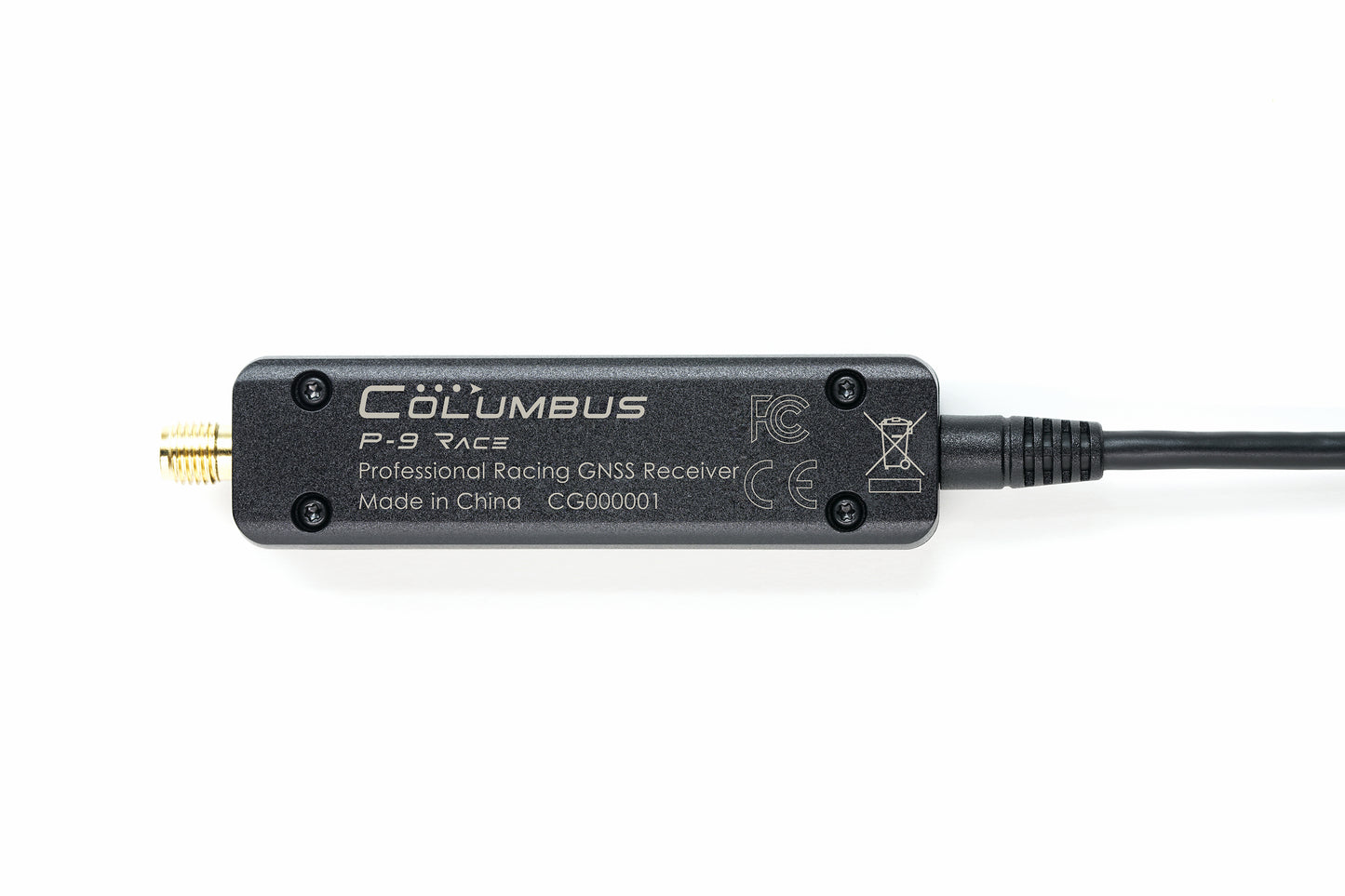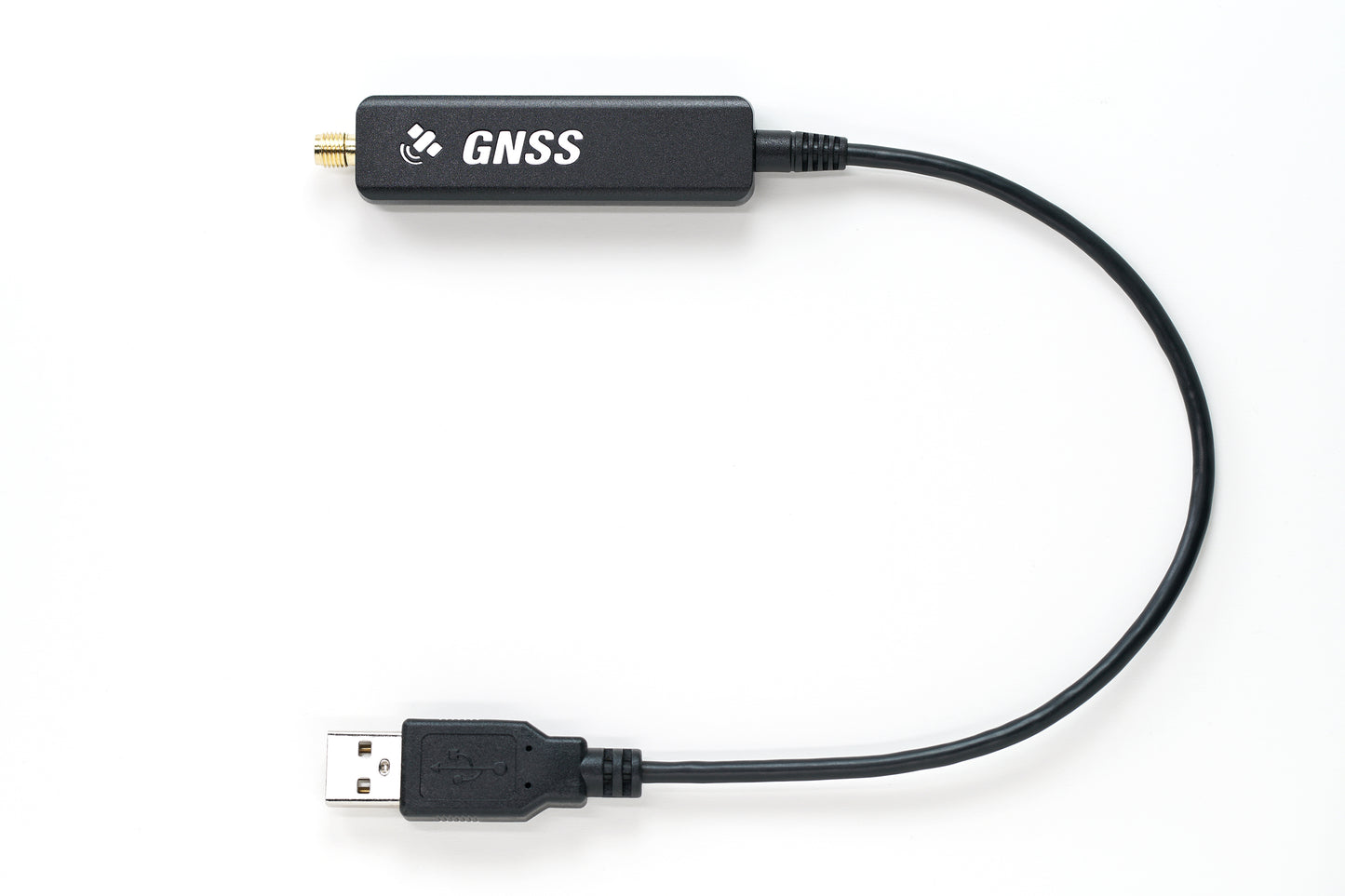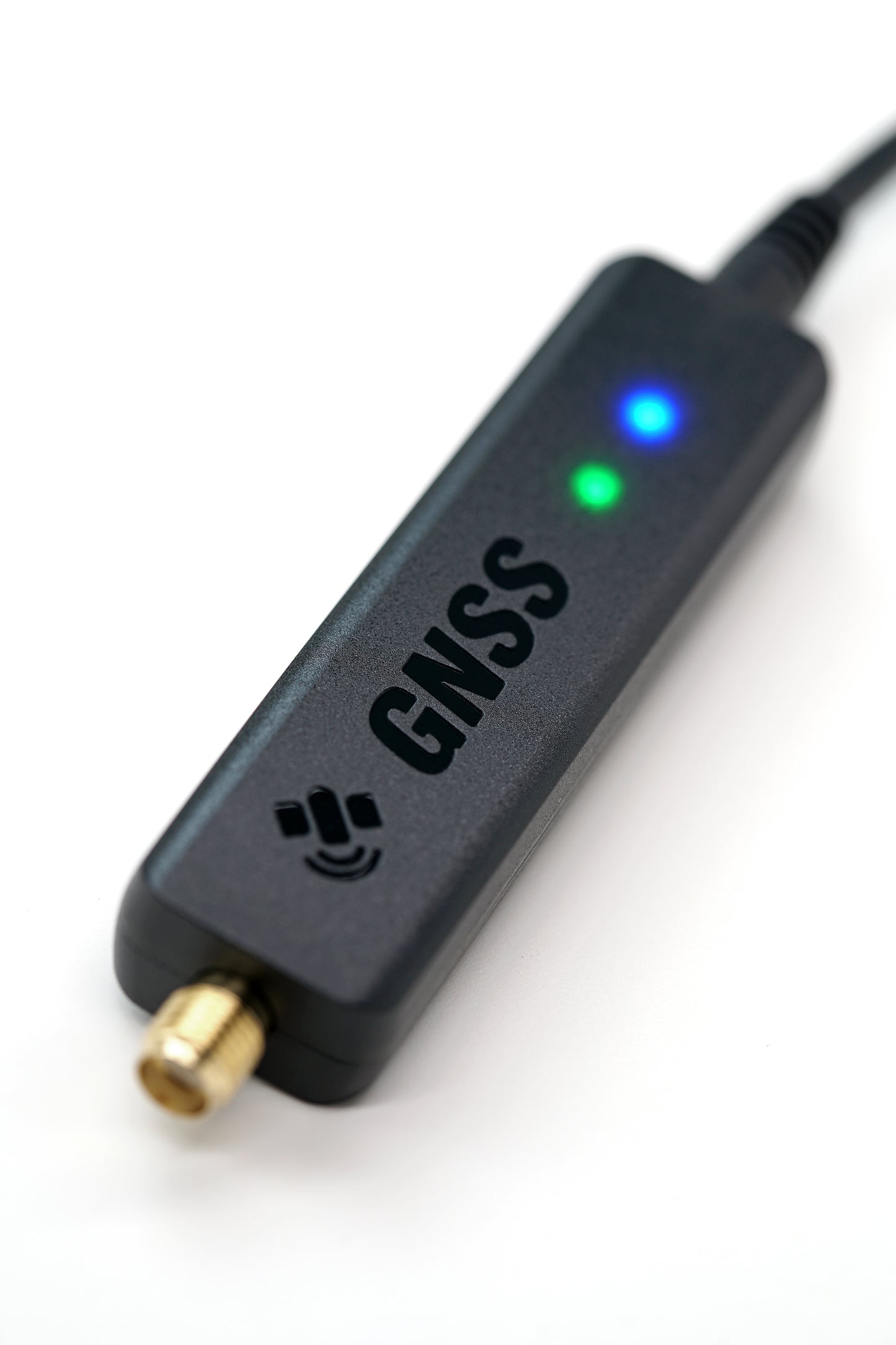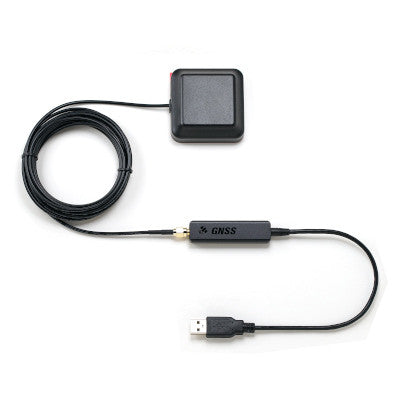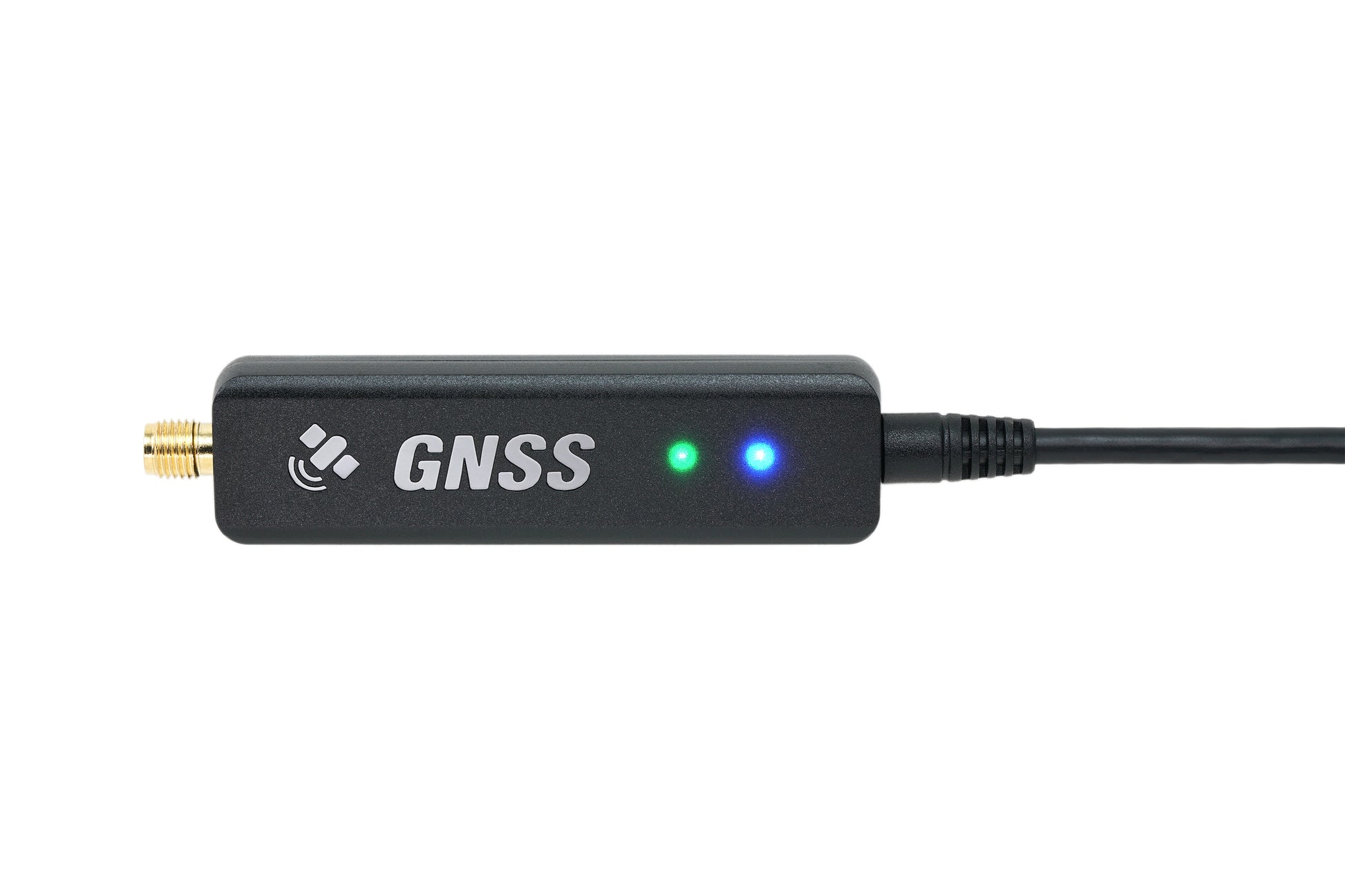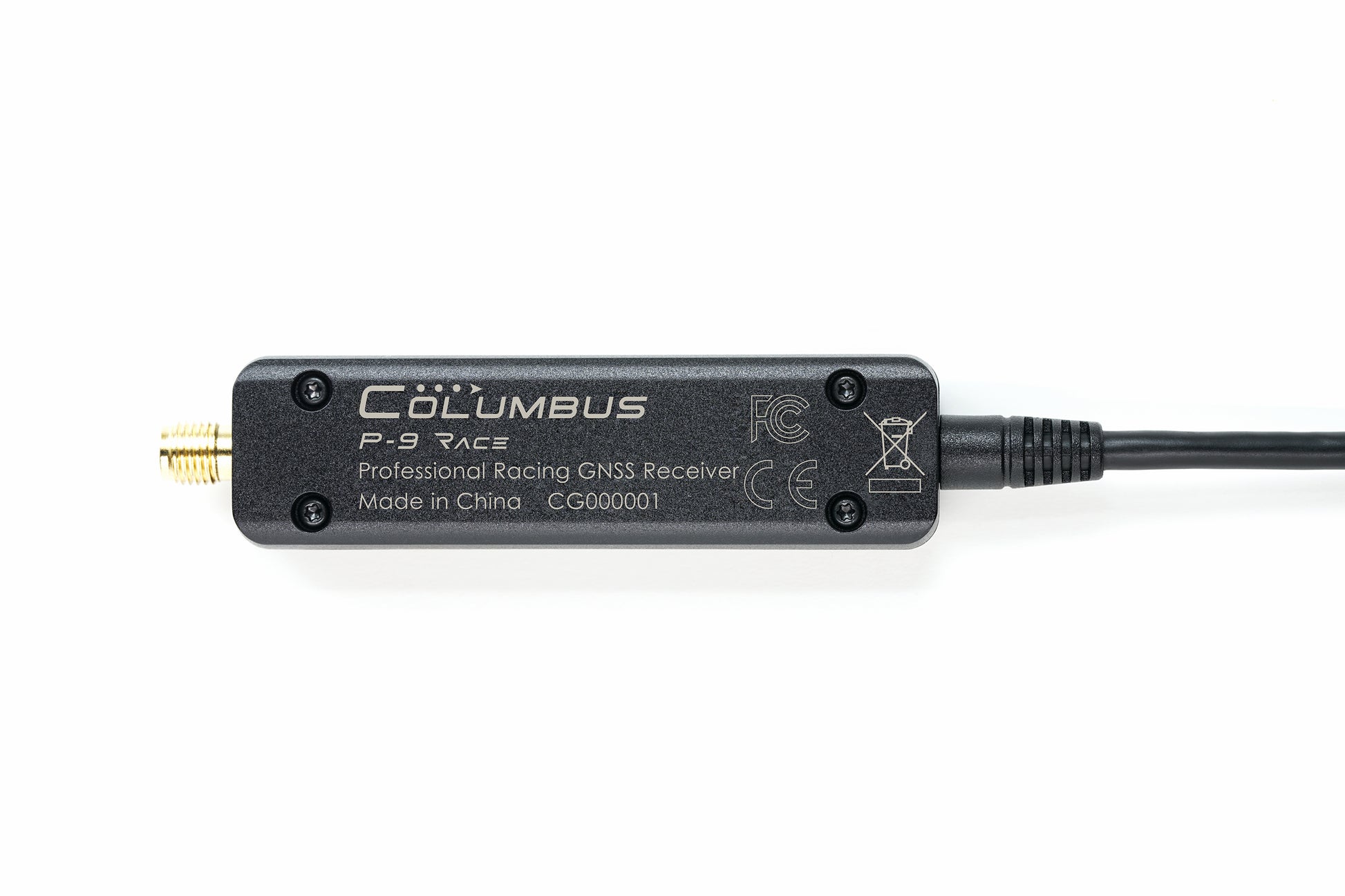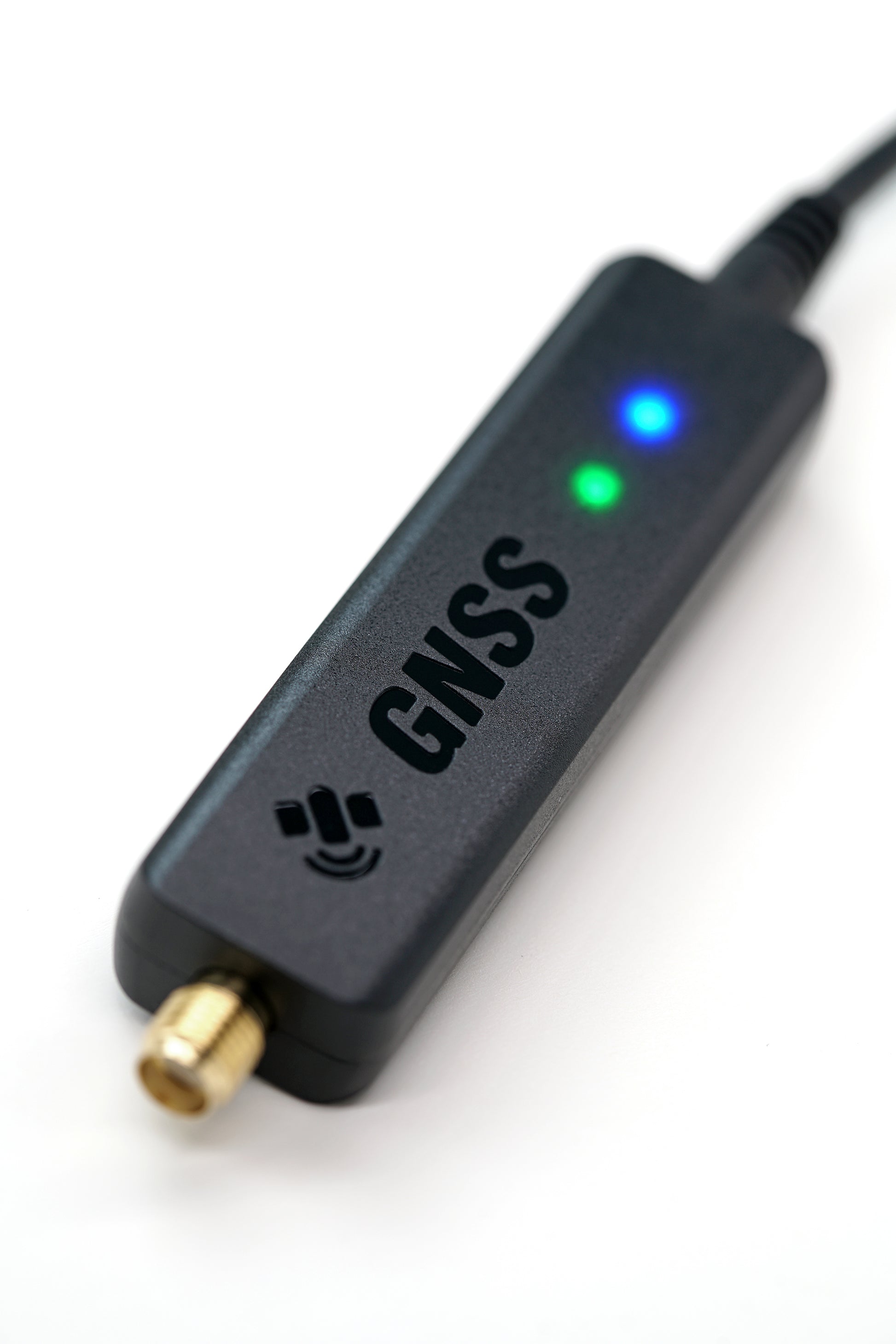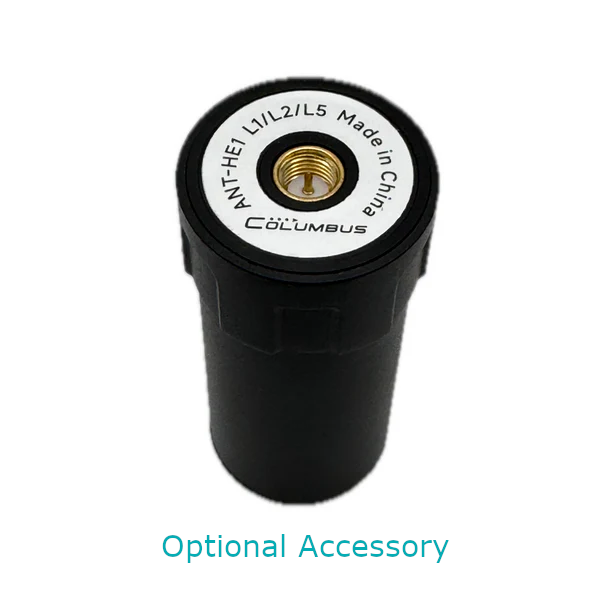Columbus P-9 Race Precision GNSS Receiver for Professional Racing (25Hz Update Rate, Meter-Level Accuracy, Dual-Mode Bluetooth)
Columbus P-9 Race Precision GNSS Receiver for Professional Racing (25Hz Update Rate, Meter-Level Accuracy, Dual-Mode Bluetooth)
Couldn't load pickup availability
Volume Discount Table
| Minimum Qty | Discount |
|---|---|
| 2 + | 5% off |
| 5 + | 6% off |
| 10 + | 7% off |
| 100 + | 9% off |

Looking for a GNSS receiver that can deliver both speed and accuracy? Look no further than the Columbus P-9 Race! With an industry-leading update rate of 25Hz, this receiver provides ultra-fast position updates for dynamic applications like racing, UAVs, and aviation.
But that's not all - the P-9 Race is designed to deliver precise horizontal positioning accuracy down to the meter level, with a CEP of 0.7m at 50% and 2.0m at 95%. This means you can trust the P-9 Race to give you the exact location data you need, without any compromise on speed.
And with support for wired/wireless connections and compatibility with all common operating systems, the P-9 Race is a versatile choice that can meet all your needs. Upgrade to the Columbus P-9 Race today and experience the best of both worlds - high-speed updates and meter-level accuracy!
Part description:
Features:
 Lightning-fast position updates at 25Hz for real-time tracking and positioning.
Lightning-fast position updates at 25Hz for real-time tracking and positioning. Exceptional meter-level horizontal positioning accuracy with 0.7m CEP 50% and 2.0m CEP 95%.
Exceptional meter-level horizontal positioning accuracy with 0.7m CEP 50% and 2.0m CEP 95%. Low latency updates with an interval as low as 0.04s for instant and precise position information.
Low latency updates with an interval as low as 0.04s for instant and precise position information.
 Large external high-gain active antenna for strong and stable signals.
Large external high-gain active antenna for strong and stable signals. The antenna adopts Industrial grade IP67 protection for rugged and durable use in all weather conditions.
The antenna adopts Industrial grade IP67 protection for rugged and durable use in all weather conditions. Wired and wireless connection compatibility with common operating systems.
Wired and wireless connection compatibility with common operating systems.

Have you ever wondered how the P-9 Race can achieve such fast and accurate positioning?
1. The Latest Ublox GNSS Module with Concurrent Reception from 4 Constellations:
P–9 Race utilizes the latest Ublox M9N module, a 92-channel GNSS engine that provides exceptional sensitivity and acquisition times for all L1 GNSS systems. The u-blox M9N supports concurrent reception from four major GNSS constellations - GPS, Galileo, GLONASS, and BeiDou - resulting in a high number of visible satellites that allows the receiver to select the best signals. This maximizes the position accuracy. Furthermore, advanced filtering algorithms mitigate the impact of RF interference and jamming, enabling the P-9 Race to deliver high accuracy and high update rate simultaneously.
2. High-gain active antenna with 4 feed points:
The large, high-gain active antenna plays a critical role in the P-9 Race's high performance. With a physical dimension of 60 x 60mm including the protection shell, the antenna's inside reception area is 48 x 48mm, which is 3.6 times bigger than a regular 25 x 25 mm antenna. It also has four feed points, while a regular antenna only has one. Additionally, its signal gain and bandwidth are far better than a regular antenna, ensuring strong and stable signals for accuracy even with the P-9 Race's ultra-high update rate.

Why is high update rate important for high-speed tracking?
To illustrate, let's take a look at a comparison of traces recorded at 1Hz, 5Hz, and 25Hz in a small portion of a kart track.

1Hz diagram
In the above 1Hz diagram, there are only a few random points, making the track indistinguishable.
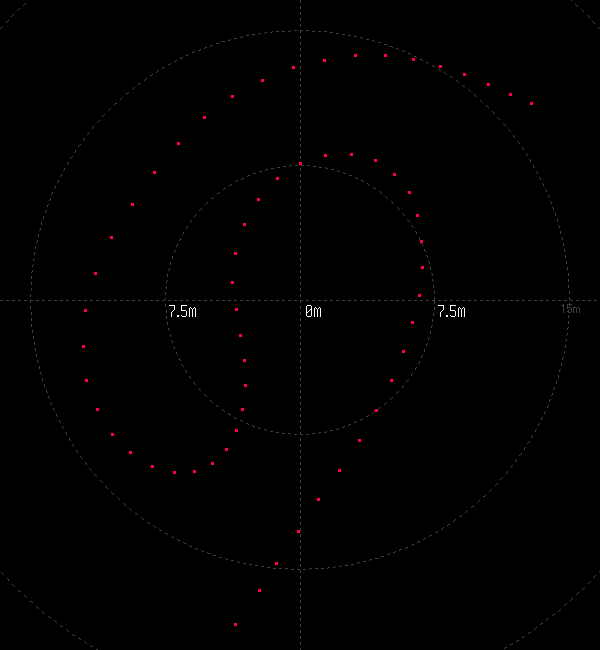
5Hz diagram
While the 5Hz diagram records a distinguishable track, it is still not detailed enough for high-speed tracking applications.

25Hz diagram
The 25Hz diagram records a very smooth track, providing more detailed positioning data that can be more accurately analyzed. At this higher update rate, the P-9 Race can capture more precise location data, making it ideal for high-speed tracking applications.
We conducted side-by-side comparison tests between the P-9 Race and a regular GNSS receiver using both single-lap and multiple-lap tests.
(To ensure a more extreme testing environment, we chose a kart track instead of a regular racing track. This is because the kart track is much smaller in size, and the G-value and direction change of the vehicle are much greater. By testing in this more demanding environment, we were able to demonstrate the superior performance of the P-9 Race compared to a regular GNSS receiver.)

1. Single lap test
Number of laps: 1 lap
Elapsed time: 43"
Mileage: 437 meters
Average speed: 36.6km/h
Max. speed: 46km/h
Max. acceleration: 1.3G
Test content: consistency with the actual track
Test time: UTC 2023-02-01 07:14:10 ~ 07:14:53
A regular GNSS Receiver

P-9 Race

2. Multiple laps test
Number of laps: 11 laps
Elapsed time: 7'52"
Mileage: 4702m
Average speed: 35.9km/h
Max. speed: 46km/h
Max. acceleration: 1.4G
Test content: multi-laps consistency
Test time: UTC 2023-02-01 07:14:10 ~ 07:22:02
A Regular GNSS Receiver

P-9 Race

What operating systems are compatible with the P-9 Race?
The P-9 Race is designed to be highly compatible with a wide range of operating systems, including Windows, macOS, Android, Linux, iOS, and iPadOS, making it compatible with laptops, tablets, smartphones, and other devices. This versatility makes the P-9 Race a convenient choice for high-performance GPS applications.

Important note for iOS and iPadOS users: Please check our P-9 Race IOS compatible list before purchasing. If your app is not on the list, the P-9 Race will NOT work with your iOS or iPadOS app, so it's best to confirm compatibility before making a purchase.
How many devices can simultaneously connect to the P-9 Race?
The P-9 Race is capable of supporting 3 output interfaces: 1 Bluetooth SPP, 1 Bluetooth BLE, and 1 USB Serial Devices/COM ports.
When utilizing all three interfaces simultaneously, up to three devices can be connected to the P-9 Race at the same time.
For instance, if you connect one device via Bluetooth SPP and another device via USB/COM port, both devices can receive GNSS data from the P-9 Race simultaneously.
The ability makes the P-9 Race a highly adaptable and flexible solution for a variety of use cases.
What type of Bluetooth is supported by the P-9 Race?
The P-9 Race features built-in dual-mode Bluetooth, supporting both BLE 5.1 and SPP 2.1 protocols.
To ensure a strong and stable data connection, we suggest aiming for a reliable range within 10 meters or slightly beyond.
Technical Specs:
Size and Weight:
Ingress Protection*:
External Active Antenna IP67
* Although the external active antenna is capable of working seamlessly in all weather conditions, it's important to remember that the main unit of the P-9 Race is not waterproof.
Operating Temperature:
-20°C to 50°C / -4°F to 122°F
GNSS Performance:
GPS (L1C/A, 1575.42MHz), Galileo (E1-B/C, 1575.42MHz), GLONASS (L1OF, 1602MHz), BeiDou (B1I, 1561.098MHz), QZSS (L1C/A, 1575.42MHz), SBAS (EGNOS, GAGAN, MSAS, WAAS, QZSS L1S)
Positioning Ability*:
Reacquisition : <2s
Hot start: <2s
Cold start: <29s
Horizontal position accuracy: 0.7m/CEP(50%), 2.0m/CEP(95%)
* Support "EPS Race" technology. 25Hz mode. The above data is from testing conducted in ideal, open environments..
Output Sentences:
Protocol: NMEA 0183
Messages: GNRMC, GNGGA, GNGSV, GNGSA (Default)
Geodesics: WGS84
Update Rate:
25Hz (Default)
Bluetooth:
SPP 2.1
BLE 5.1
Reliable range: up to slightly >10m (33 feet)
Connectors:
USB device: USB 2.0 Type-A
Active Antenna connectors: SMA
Antenna feeder: 300cm / 9.8feet
Power:
P-9 Race: DC 5V / 70mA
External active antenna:DC 3.3V / 35mA
OS support:
Windows 7 or greater
Mac OS X v10.10 or greater
Linux 2.6.12 or greater
iOS 15 or greater
Android 10 or greater
iPad OS 15 or greater
Certificate:
FCC, CE, RoHS
Packing List:
- P-9 Race Professional Racing GNSS Receiver
- External Active Antenna
- Warranty Card
- Helica Antenna Kit (Optional)
Product Resources
Official Documents:
Driver Downloads:
-
 USB GNSS driver already built-in to Windows OS. No need to downloads.
USB GNSS driver already built-in to Windows OS. No need to downloads.
-
 GNSS Sensor Device driver for Windows 10 /11
GNSS Sensor Device driver for Windows 10 /11
-
 USB GNSS driver already built-in to MacOS. No need to downloads.
USB GNSS driver already built-in to MacOS. No need to downloads.
-
 USB GNSS driver already built-in to Linux OS. No need to downloads.
USB GNSS driver already built-in to Linux OS. No need to downloads.
Tool Downloads:
How to Articles and Blogs:
-
 How to view the positioning information output by P-9 Race?
How to view the positioning information output by P-9 Race?
-
 How to connect a GPS/GNSS Receiver to Google Earth on Windows?
How to connect a GPS/GNSS Receiver to Google Earth on Windows?
-
 How to connect a GNSS Receiver to Windows Maps (or Windows Location Service)?
How to connect a GNSS Receiver to Windows Maps (or Windows Location Service)?
-
 How to test the positioning accuracy of the P-9 Race?
How to test the positioning accuracy of the P-9 Race?
-
 Why Can’t You Rely on Accuracy Readings from Some GPS/GNSS Apps for Advanced GNSS Receivers Like the Columbus P9 Race?
Why Can’t You Rely on Accuracy Readings from Some GPS/GNSS Apps for Advanced GNSS Receivers Like the Columbus P9 Race?
Tech Support Topics and Forums:
-
 Is it possible for the main unit of the P-9 Race to function without being connected to the antenna?
Is it possible for the main unit of the P-9 Race to function without being connected to the antenna?
-
 What is the baud rate for output from the P-9 Race?
What is the baud rate for output from the P-9 Race?
-
 When the P-9 Race outputs location data, is it referring to the position of the antenna or the main unit?
When the P-9 Race outputs location data, is it referring to the position of the antenna or the main unit?
-
 How to view the positioning information output by P-9 Race?
How to view the positioning information output by P-9 Race?


